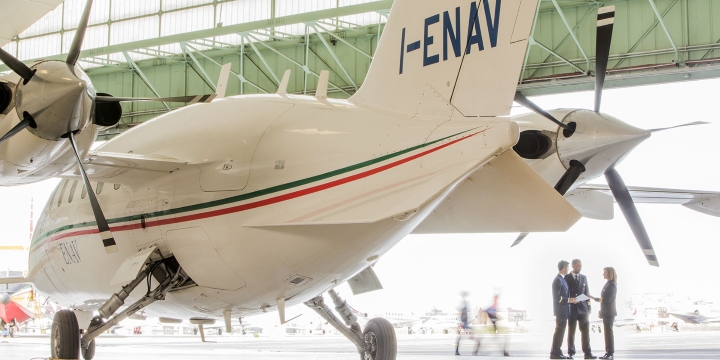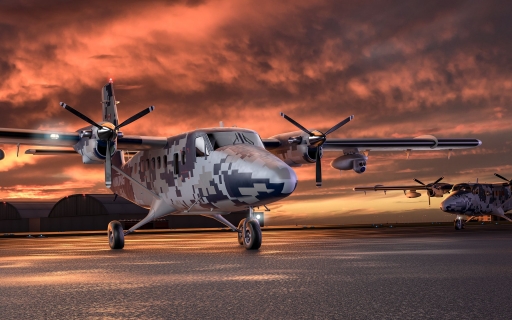
OLATHE, Kan.–(BUSINESS WIRE)– Garmin International, Inc., a unit of Garmin Ltd. (NASDAQ: GRMN), today announced certification of the G1000® NXi integrated flight deck upgrade for the King Air C90. With the G1000 NXi, aircraft owners and operators receive a wealth of new features, innovative capabilities and added utility all within a modern flight deck. King Air C90 owners and operators can easily upgrade from the G1000 to the G1000 NXi with minimal aircraft downtime and installation labor to receive a next-generation integrated flight deck.“As the popularity and demand of the G1000 NXi continues to grow, we’re excited to expand the availability of this upgrade to even more aircraft”
“As the popularity and demand of the G1000 NXi continues to grow, we’re excited to expand the availability of this upgrade to even more aircraft,” said Carl Wolf, vice president of aviation sales and marketing. “The G1000 NXi is an advanced flight deck that adds modern features including wireless connectivity, visual approach guidance, SurfaceWatch™, HSI map and more, all of which add tremendous value and advanced capability than ever before into existing King Air C90 aircraft.”
Flight Stream 510 and Connext® technology within the G1000 NXi integrated flight deck enables Database Concierge, the wireless transfer of aviation databases from the Garmin Pilot™ app on a mobile device to the G1000 NXi. Additional features include two-way flight plan transfer, the sharing of traffic1, weather1, GPS information, back-up attitude information and more, between the G1000 NXi and the Garmin Pilot, FltPlan Go and ForeFlight Mobile applications.
Visual approach guidance and map overlay within the horizontal situation indicator (HSI) further enhance the G1000 NXi feature set. Within the HSI map, pilots can overlay NEXRAD, Flight Information Service-Broadcast (FIS-B) weather, weather radar, SafeTaxi® airport diagrams, traffic, terrain and more. NEXRAD weather radar imagery can be overlaid on the moving map and animated on the multifunction display (MFD). Split-screen view is also available on the MFD, offering a simultaneous view of maps, charts, checklists, flight plans and more on a single screen. The addition of sectional charts and IFR low/high enroute charts give pilots convenient access to chart data on the flight display.
The G1000 NXi also supports the display of Automatic Dependent Surveillance-Broadcast (ADS-B) In traffic and subscription-free Flight Information Service-Broadcast (FIS-B) weather. The addition of SurfaceWatch runway monitoring technology provides visual and aural cues to help prevent pilots from taking off or landing on a taxiway, on a runway that is too short or on the wrong runway based on performance data entered during preflight. Visual and audible runway distance remaining annunciations are also available via SurfaceWatch within the G1000 NXi.
Modernized displays offer improved readability, while state-of-the-art processors provide smoother panning throughout the displays and faster map rendering within the G1000 NXi. Because the flight displays initialize in seconds, pilots have immediate access to frequencies, flight plan data and more, saving valuable time in the cockpit. The G1000 NXi integrated flight deck also incorporates contemporary animations and new LED back-lighting, offering increased display brightness and clarity, reduced power consumption, and improved dimming performance.
This upgrade adds to the growing portfolio of aircraft eligible for the G1000 NXi integrated flight deck upgrade, including the King Air 200/300/350, Daher TBM 850/900, Cessna Citation Mustang, the Piper PA-46 and soon, the Embraer Phenom 100. Aircraft owners and operators can easily upgrade to the G1000 NXi with little aircraft down time and disruption of the panel because the displays preserve the same footprint and connectors, so panel and wiring modifications are minimized. The G1000 NXi upgrade for the King Air C90 is available immediately through select Garmin dealers. The upgraded components of the G1000 NXi also come with a two-year warranty, which is supported by Garmin’s award-winning avionics product support team. For additional information regarding the G1000 NXi upgrade for the King Air, contact Scott Frye at 913-440-2412 or scott.frye@garmin.com.
Garmin’s aviation business segment is a leading provider of solutions to OEM, aftermarket, military and government customers. Garmin’s portfolio includes navigation, communication, flight control, hazard avoidance, an expansive suite of ADS-B solutions and other products and services that are known for innovation, reliability, and value. For more information about Garmin’s full line of avionics, go to www.garmin.com/aviation.











